#philippine literature
Text
To eat breakfast, alone, and to know that I
have cooked for you once: eggs, pancakes, honey,
that I have eaten not only what I made but
also you; you, tasting better each time I swallowed.
Bino A. Realuyo, from "Hunger" in One Hundred Love Poems: Philippine Love Poetry Since 1905 (University of the Philippines Press, 2015)
1K notes
·
View notes
Text

Angela Gabrielle Fabunan, Midway
34 notes
·
View notes
Text
Filipino poet and feminist critic Lilia Quindoza Santiago has pointed out that the word for grammatical gender in the Philippines is kasarian, and already it semantically affords a little more flexibility than its Western counterpart, which is clearly and hopelessly bifurcated. Sari, repeated in Tagalog-Filipino, is sari-sari, or "all and sundry". Thus, there may well be a kind of diversity to gender that may be allowed by certain if not most cultures in the Philippines.
J. Neil C. Garcia, Performing the Self: Occasional Prose
#something about this makes me so happy#though it's a tagalog-filipino word so now i wonder what is the word for gender in other dialects in the ph#gender#queer#philippine literature#j. neil c. garcia
153 notes
·
View notes
Text
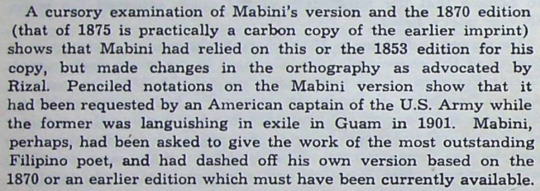

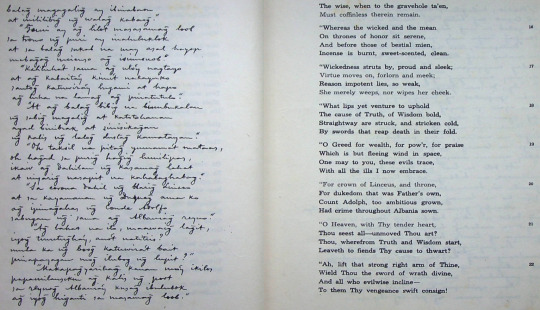

Mabini's Handwritten Version of Francisco Baltasar's "Florante at Laura"
Preface, Carlos Quirino • excerpt from TO THE READER (right: in Mabini's handwriting, left: English translation by Tarrosa Subido)
#comparatives tag#book club tag#apolinario mabini#philippine literature#weeping sobbing at seeing mabini's handwriting ngl
57 notes
·
View notes
Text


Philippine Book Festival 2023 Haul! ✨ | Out of all the book fests/fairs I've attended, this was my favourite! I've yet to go through my photos and videos from the event, so flatlay muna for now.
81 notes
·
View notes
Text
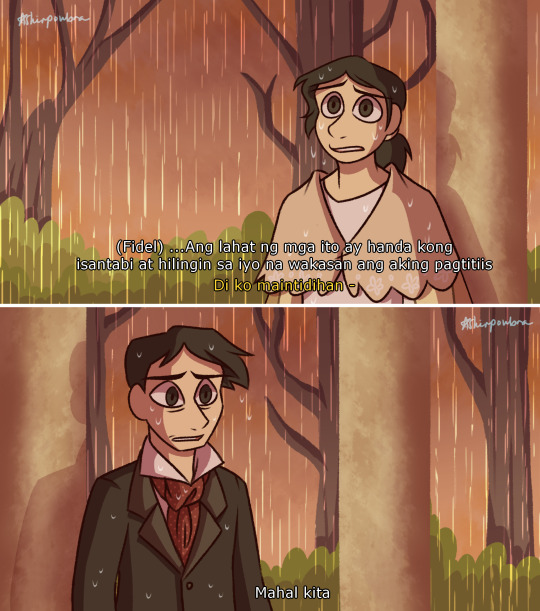

It's that confession scene from Pride and Prejudice but set it in 1800s Spanish colonized Philippines
I really wanted to redraw this scene, but I didn't know which pairing I could use, since most of my ships already have this redraw.
Then someone on twitter mentioned that Filay (Fidel and Klay) would fit this scene and I couldn't agree more. So here.
Also English version:


Okay, you can leave here, I'm just gonna ramble again over here
I never liked the duology back in highschool. I never read em, but I kinda know what happens and you wanna know why?
The teacher I had, don't get me wrong, she was a lovely person, and I learned a lot from her. However, when it came to discussing these two books, no matter how many notes I've studied/memorized and read future chapters, she'd never include them in exams or quizzes and you're all left in the battlefield making up bs answers as you go. Like What???
Then this show (or teleserye as the locals would call it lol) came along, which is basically an isekai to the first book and boom, historical Philippines brainrot. The protagonist is, well, essentially sort of a Mary Sue, but I am in awe by how progressive some of the episodes are to the point I even cried which is ironic considering this takes place in the past wow. This country, as that one article said it, treats progression like the plague and it was refreshing to see it on television for the first time.
Kinda regretted that I never took these two books seriously now, and whenever I look for them in bookstores/libraries I can no longer find traces of the books, which is a shame, you'd think that when a show with such huge production would have the money to republish/reprint the books as some sort of promotion, but oh well maybe someday I'd be able to finally read them.
#maria clara#crisostomo ibarra#literature#philippine literature#artph#MCaI#maria clara at ibarra#filay#digital art#fanart#art#comics#fan comics#historical fiction
236 notes
·
View notes
Text
TOXIC YURI OF THE DAY: "Denial, Denial" by Lakambini A. Sitoy, published in the Likhaan Book of Poetry and Fiction
"Denial, Denial" is a Filipino short story written in English that explores the unhealthy "friendship" between college roommates Lara and Cherie. Recommended if you're interested in:
Masc × femme
Not friends, not lovers, but a third secret fucked up thing that leads to homicide
Public sex
Content Warnings:
CSA (This does not happen between the main couple. It's only a significant part of one of the character's backstory.)
Internalized homophobia
4-5 years age gap
Excerpts of "Denial, Denial" under the cut:
Excerpt #1:

Excerpt #2:

17 notes
·
View notes
Text
No reader, native or foreign, can enjoy Rizal’s Noli Me Tangere and El Filibusterismo without knowing the circumstances that led the author to conceive them and the reason for their being. The humor, the irony, the piercing satire in their pages would be lost on the reader if he does not understand the historical background of those novels. I once said at another time and place that Rizal’s novels are not, properly speaking, fiction. They are socio-historical novels which give us an intimate glimpse into the condition of Philippine society and the manner and morals of the people — the natives as well as the Spanish rulers — at a definite point in time. To look upon them as pure fiction is to misread Rizal’s intent and purpose.
— Teodoro A. Agoncillo, from History as Humanistic Studies
#philippine history#philippine literature#the philippines#teodoro agoncillo#jose rizal#noli me tangere#el filibusterismo#my curations
168 notes
·
View notes
Text

the first issue of makiling review is now out, which includes the (revised) chapter 1 of my undergraduate thesis. i'm really proud of this article, because it is basically my years of discontent as a non-inglishero writer in english finally purged on the page.
this article features many hits such as the following:
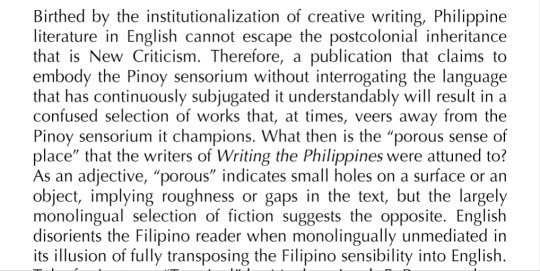
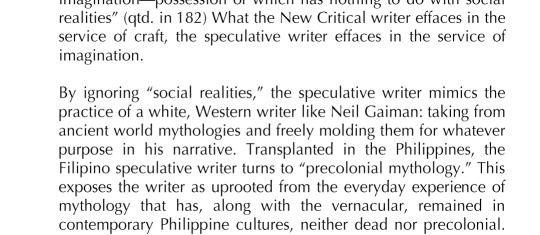
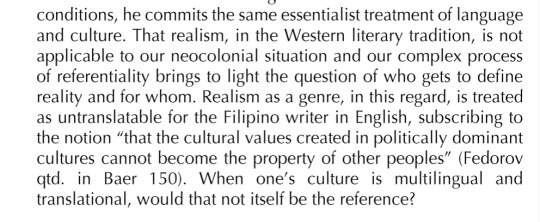

& more ✌️✌️✌️
103 notes
·
View notes
Text
Weeping Crocodiles and Riverine Muses
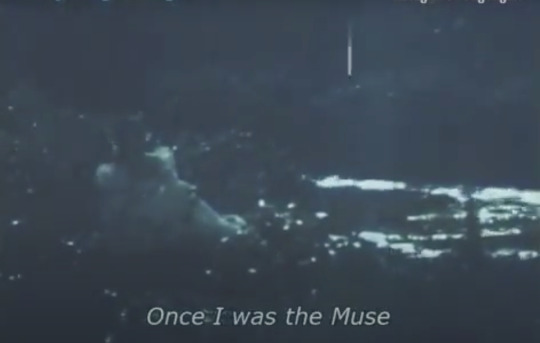

The main art for WHEN THE CROCODILES WEEP is inspired by the ending shot of Mutya ng Pasig (1950, dir. Richard Abelardo). The movie is a drama about the death of the village songstress Chedeng and its ripple effects years later. The ending shot is of the floating ghost of Chedeng - theorized by the locals to be various things, from a witch to a mermaid.
This haunting imagery called to mind the folk tale of Doña Jeronima, also a diwata haunting the Pasig River - her story is retold by both Jose Rizal in El Filibusterismo and Nick Joaquin in a short story of the same name. I ended up merging Chedeng's character with her to create the Doña Jeronima of the game. She is The Riverine Saint, patroness of the Obispo clan (whose names are a reference to the Archbishop in the Doña Jeronima short story, by the way!).
Back to Chedeng. In the movie, Chedeng sings the following lines:
Dati akong Paraluman sa Kaharian ng pag-ibig
Ang pag-ibig nang mamatay
Naglaho rin ang kaharian
[Translation: I used to be the Muse of a Kingdom of love
When the love died
The kingdom was destroyed as well]
This made me think: what if instead of a Golden Land, it was a Kingdom of Love? I expressed this through the game's opening text:
Once upon a time, there was a kingdom of love blossoming under the waters of a river.
People who lived above cried out: ”We are hungry! We are cold!”
The muse of the kingdom felt pity for these poor wretches. In her mercy, she turned them all into crocodiles, making them part of her kingdom. They lived underwater, and never knew suffering again.
Now, every time you see a crocodile weep, know that it is crying tears of joy.
Which brings me to the imagery of crocodiles, which were numerous in the Pasig River during the Spanish colonial period. We're familiar with the expression crocodile tears; we often represent politicians as these supposedly greedy, deceitful reptiles. The Obispos are a political clan, so I wanted to make a reference this.
However, in some pre-colonial belief systems crocodiles were also revered as the souls of ancestors. I tied this by establishing that the hoard of gold came from the Obispo patriarch's datu ancestors. The idea that a single clan has been ruling a territory as far back as 500 years ago also compels me greatly.
+
I tried to be comprehensive in covering the game's references to Philippine literature while still being coherent. Hopefully this is a step in the right direction; I acknowledge that most likely no one will pick up on the Mutya ng Pasig reference in particular, so I wanted to spell it out.
#swellbloom kids#philippine folklore#ttrpg#umineko#when the crocodiles weep#wtcw#pasig river#mutya ng pasig#philippine literature#panitikandom
8 notes
·
View notes
Text
[L]ibraries in the Philippines have been traditionally low in number, appallingly so in proportion to the population of the country. In the 1930s, for example, when the population was at around fifteen million, the estimated number of public libraries was no more than seventy-five. [And] while the public library system saw some growth in the succeeding decades, there still remained a shortage of libraries for the rapidly increasing Philippine population. In 1999, there were 545 public libraries in the country; the population was well over seventy million. The lack of libraries in the Philippines has not allowed for such institutions to play a part in the life of towns and cities. Or perhaps it is just well to say that the life in towns and cities did not allow a part for libraries. Filipinos generally associate libraries with formal education, as institutions where students and scholars go to further their learning rather than as centers where any person can visit to gain some enlightenment and recreation.
Patricia Jurilla, from "Tagalog Best Sellers of the Twentieth Century: A History of the Book in the Philippines" (Ateneo de Manila University Press, 2008)
138 notes
·
View notes
Text

The Don Brothers!
#ibong adarna#don pedro#don diego#don juan#philippine mythology#philippines#filipino#rel'sart#I revisited the myth andddd this happened#philippine literature#ph#character design
143 notes
·
View notes
Text
Because there’s nothing I love more than my hunger
That I carry with me like a world/ all desire/
Buried in my bones like shrapnel./ When your eyes
Marry mine by the light of a jukebox/ like a call
Connecting for one glowing moment,/
It has a certain wherewithal./ It leaves an empty streetcar
Taking me to the next town/ and the next town/ and the next.
from “Ode to Blanche Dubois,” The Proxy Eros by Mookie Katigbak Lacuesta (Anvil Publishing, 2008)
21 notes
·
View notes
Text

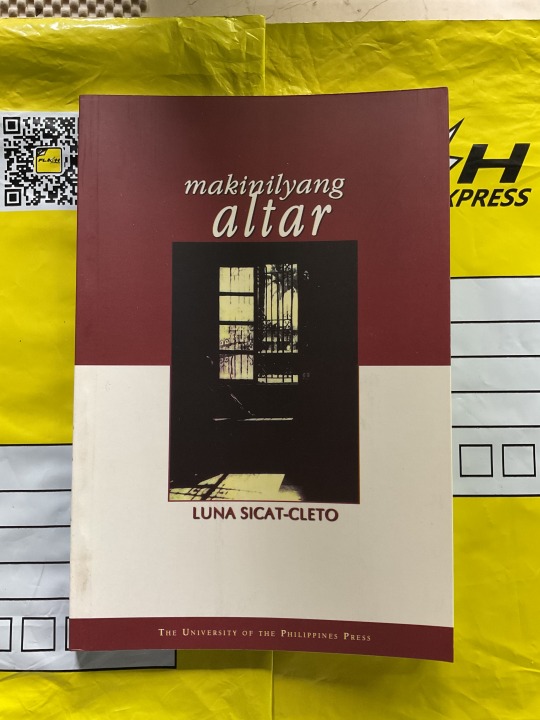
Finally received the book I ordered for September’s book discussion. It’s Makinilyang Altar by Luna Sicat-Cleto. Good thing I already finished reading The Secret History so I can already start reading this one. Or I can continue contemplating The Secret History a bit more, and start reading Makinilyang Altar over the weekend. I’m still not ready to move on, after all.
Anyway this was Shopee’s second attempt at delivering the parcel, the courier marked the first attempt unsuccessful with “buyer not on location” as the reason even though I waited for them the whole day. They didn’t even try to call or message me and they marked it as “buyer not on location”? But it doesn’t matter anymore, I already have the book, so.
12 notes
·
View notes
Text

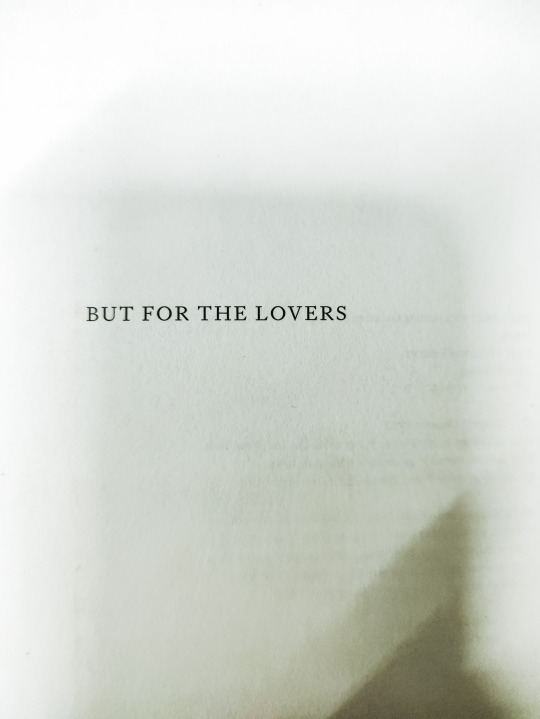
This is perhaps my most anticipated read of the year, and I’m happy to report that it did not disappoint. This novel has a lyrical, almost feverish prose that is brutal in (a lot of!) places. If you do not like flowery writing, I don’t think you’ll appreciate this.
On a sentence level, “But for the Lovers” demands a lot from the reader. The prose is dizzying, challenging, and is rife with code-switching. It is not a book that will coddle purely English speakers, which I laud. In the novel's foreword, Gina Apostol wrote that every time the Filipino employs the English language, the purpose is always subversion. BftL perfectly demonstrates this point. The way Nolledo used English in this book is very Filipino and very weaponized. And as I read, I got the sense that he was having a lot of fun writing this masterpiece. This book is not an easy read, but one that is worth the trudge.
So what is it about? “But for the Lovers” follows a cast of characters living in a rundown tenement building in a Japanese-occupied Manila at the tail end of World War II. This is a war novel with much waiting; the characters await their American “liberators.” And the reader waits too—knowing full well that when Americans do finally arrive, Manila will be razed to the ground.
The way Nolledo employs language in this book is really unique. It reads a lot like magical realism with its lyrical and flowery prose, but this book is very much grounded. And brutal. The seemingly magical things are actually happening in the physical world. For example, the opening sentence reads: “He was beginning to eat flowers, and the crescent moon was in his eyes when he awoke again.” It sounds a lot like a work of magical realism. But later in the chapter, we find that the man was literally eating flowers because he passed out under a flowering tree. And when he awoke, he saw the crescent moon. This push and pull of seemingly fantastical language against the physicality of the scenes continues throughout the novel. In magical realism, the fantastical elements are also usually employed to shield against the brutality of the physical world. In Nolledo’s novel, the brutality of the physical world disrupts the reader's enjoyment of its fantastical language. When brutality happens to the characters, it punches you in the gut.
So much trust is put in the ability of the reader. Whenever a chapter opens, the reader is plunged into the middle of the narrative and is expected to make sense of what’s happening—who’s the speaker in this chapter? Where am I? What is happening? And it’s only in the latter part of the chapter where things will start to make sense. Then, you’re on to a new chapter, and the disorientation starts again. I enjoyed trudging through the book, but can understand why people may be turned off by that.
Another marvel of this novel is that from start to finish, everything moves parallel along two realms: this is a physical novel, but it’s also very much an allegorical one. This beautifully reflects the poetic quality of our history and experiences. Of how we always seem to repeat the mistakes of the past. Of how, many years later, we seem to find ourselves in the same situations. And if we extend this to the rise of the Marcoses and the historical revisionism happening in the present… hay nako.
Which leads me to the way Nolledo wrote the novel's climactic moment: this war novel culminates in an overlap of memories. The parallel sentences hone in on the point that things that have happened before will happen again. America fooled us twice—first when they colonized us in 1899 and now in 1945 as they shelled Manila to the ground—both done in the pretense of being our liberators.
I found the allegories too in the nose at first. But thinking about it now, I’m glad the subtexts are simple and obvious, because the text itself is already challenging enough. Kung mahirap pa pati subtext san na lang ako pupulutin?
Some things I did not enjoy: I did not like the dream sequences in this novel. I did not like the woman (or, in the case of BftL, girl) as a nation trope employed. Especially since the waif who is the stand-in for the nation is worse than Maria Clara in Rizal’s novels. I don’t appreciate the sexist language (i.e., penetration), especially around the awakening of the nation’s soul. That said, I forgive Nolledo for his sexism. He’s a genius but still very much a product of his time.
The novel ends on a hopeful note, a promise of becoming, of blossoming for this nation. (Reading it today under another Marcos administration is bleak and depressing.) But one has to hold on to hope.
This novel is breathtaking, audacious, and blatantly anti-imperialist. It also tells us that the poor, the masa, carry the nation’s soul—not the educated middle class, not the wealthy landowners, not the ruthless authoritarians in power. But for the Lovers is a challenging read, but one that is well worth your time.
More photos from the book on my Instagram!
35 notes
·
View notes
Text
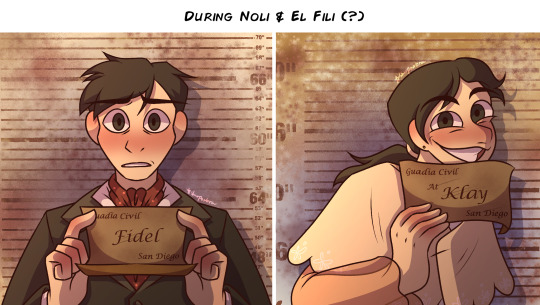

I don't really celebrate it but have a fun independence day
(again, ignore the heights)
#fanart#artph#art#digital art#mcai#maria clara at ibarra#memes#barbie meme#noli me tangere#el filibusterismo#philippine literature#shitpost
79 notes
·
View notes